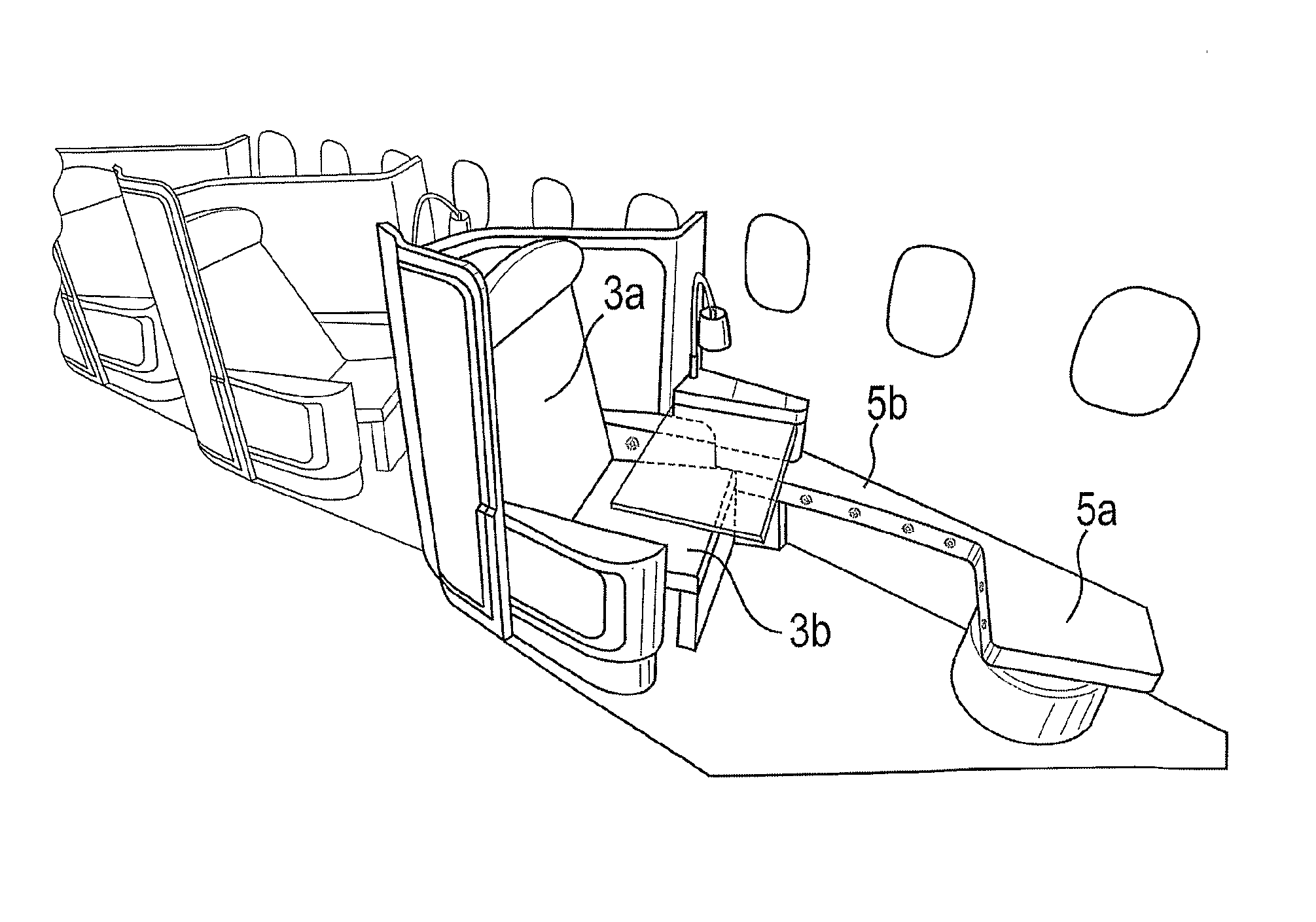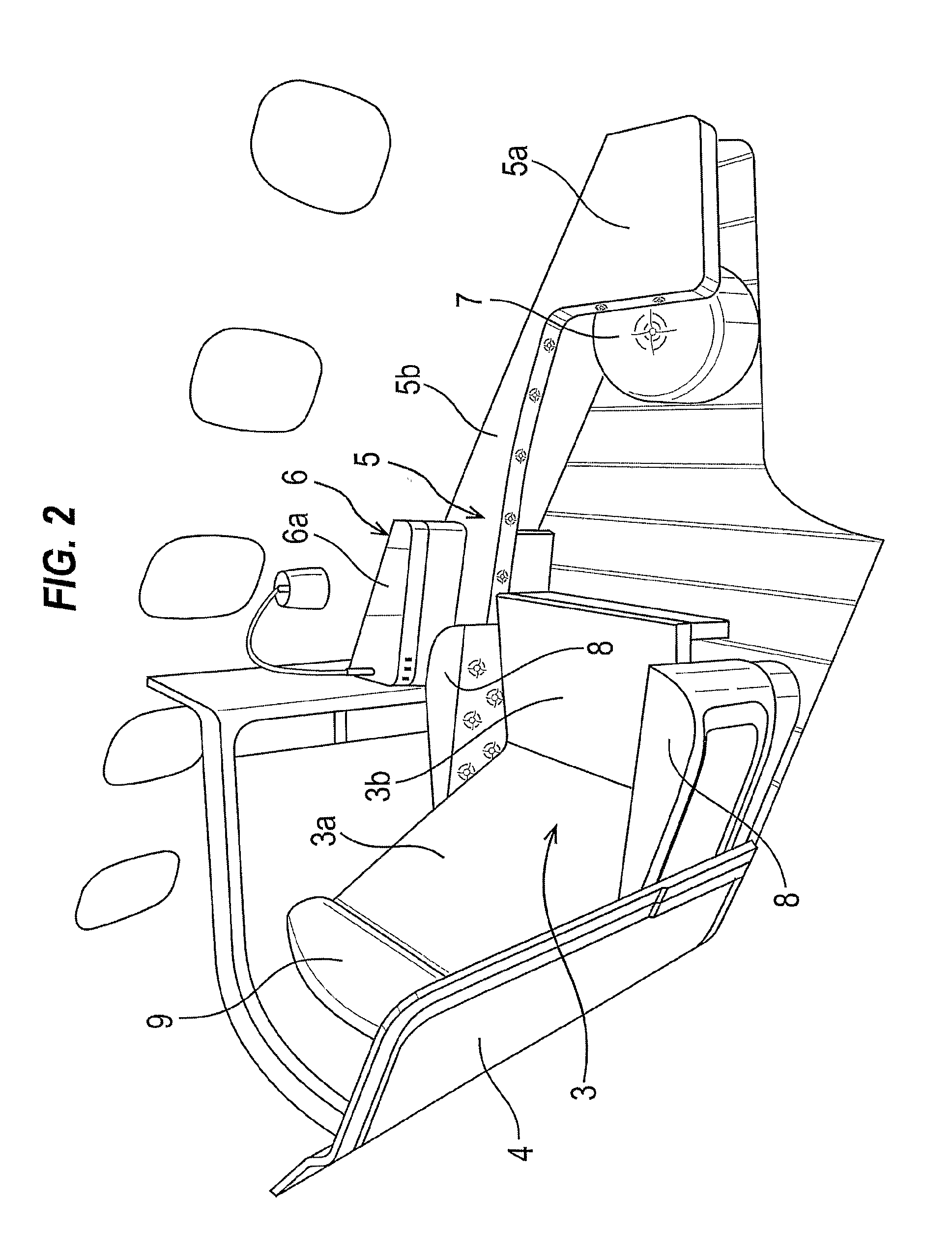Aircraft passenger seat
a passenger seat and aircraft technology, applied in the field of aircraft passenger seats, can solve the problems of increasing fuel consumption and therefore monetary and environmental costs, space use, and stringent design constraints on passenger seats for aircra
- Summary
- Abstract
- Description
- Claims
- Application Information
AI Technical Summary
Benefits of technology
Problems solved by technology
Method used
Image
Examples
Embodiment Construction
Terminology
[0022]In describing the embodiments, ‘horizontal’ and ‘vertical’ are defined with reference to the floor of the passenger seating area of the aircraft. As in well known in the art, the angle of the floor relative to the gravitational horizontal is determined by the pitch of the aircraft, which is about 15° during takeoff and landing, and about 3° in level flight. When describing an individual seat, ‘forward’ and ‘rearward’ are defined with reference to the direction in which the passenger faces when seated.
Seating Arrangement
[0023]As shown in FIG. 2, an aircraft passenger seating arrangement in an embodiment of the present invention comprises the following main components: a seat 3 comprising seat back 3a and seat pan 3b, a housing or shell 4 partially surrounding the seat 3, a surround 5 extending along the side and forward of the seat 3, and a ‘credenza’ or cabinet 6. The main components may be constructed as separate components and installed together in an aircraft to ...
PUM
 Login to View More
Login to View More Abstract
Description
Claims
Application Information
 Login to View More
Login to View More - R&D
- Intellectual Property
- Life Sciences
- Materials
- Tech Scout
- Unparalleled Data Quality
- Higher Quality Content
- 60% Fewer Hallucinations
Browse by: Latest US Patents, China's latest patents, Technical Efficacy Thesaurus, Application Domain, Technology Topic, Popular Technical Reports.
© 2025 PatSnap. All rights reserved.Legal|Privacy policy|Modern Slavery Act Transparency Statement|Sitemap|About US| Contact US: help@patsnap.com



